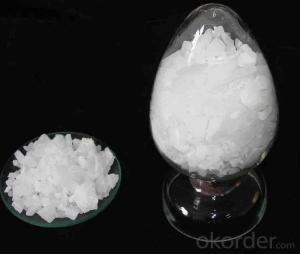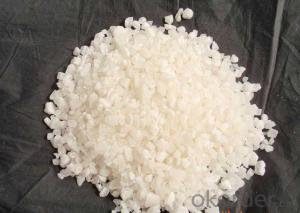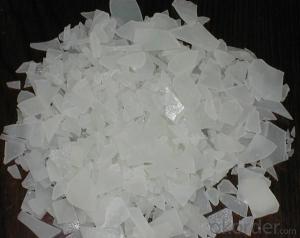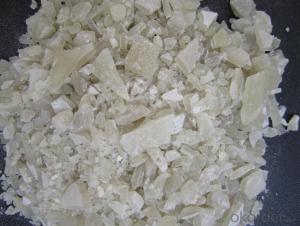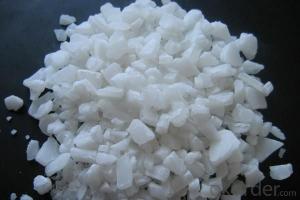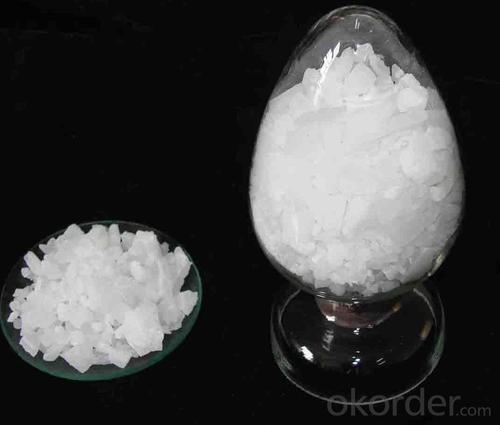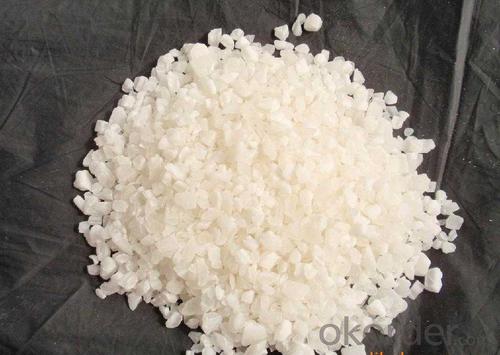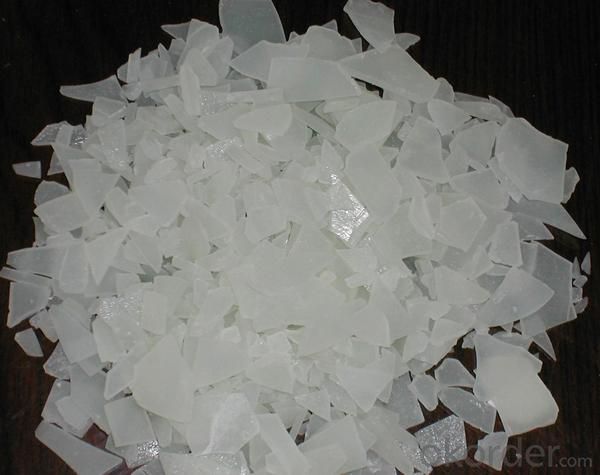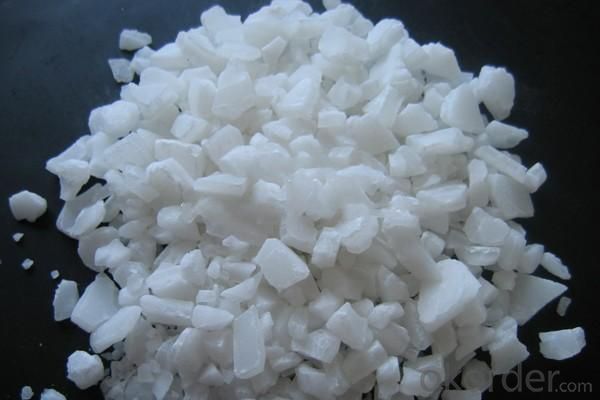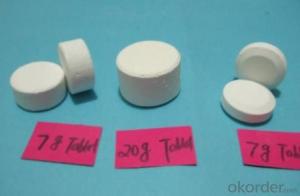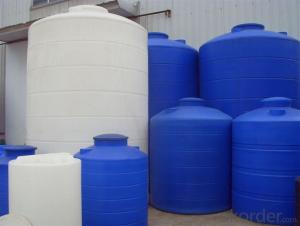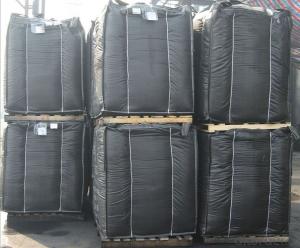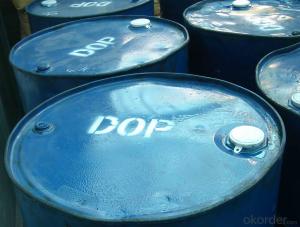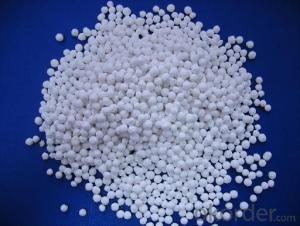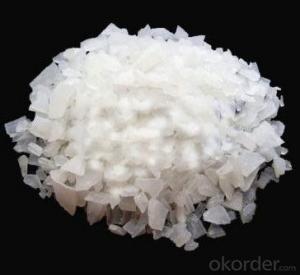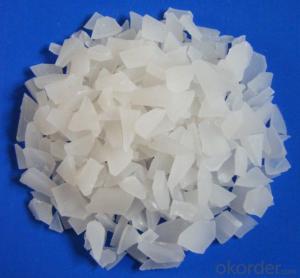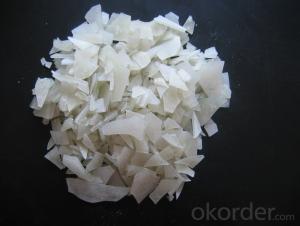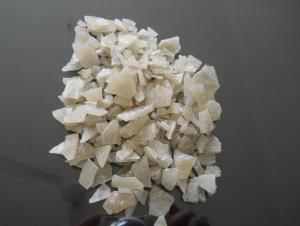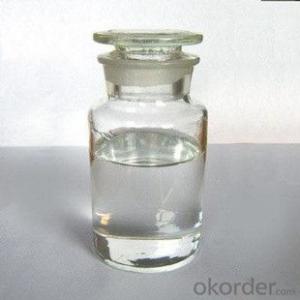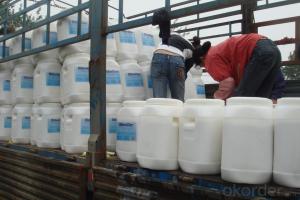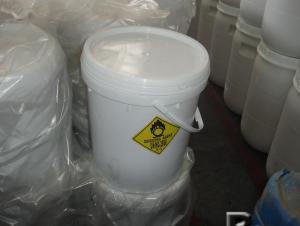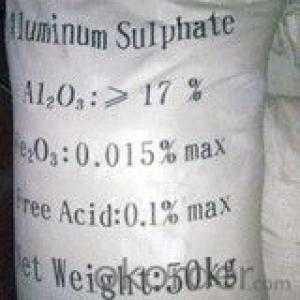Aluminium Sulphate For Drinking Water Treatment
- Loading Port:
- Qingdao
- Payment Terms:
- TT OR LC
- Min Order Qty:
- 25 m.t.
- Supply Capability:
- 12000 m.t./month
OKorder Service Pledge
OKorder Financial Service
You Might Also Like
1. Chemical and Physical Properties:
Product name: Aluminium Sulphate or Aluminum Sulfate
Shape: Flakes or Granular or Powder.
EINECS NO.:233-135-0
CAS No.: 10043-01-3
HS.Code: 28332200
Molecular Formula: Al2(SO4)3
Appearance:It is white or grey flake,particle or massive crystallization.
Apt to cake after moisture absorption when laid in air for a long time.A little green because of Fe2+ ,yellow when Fe2+ is oxided to Fe3+.Soluble in water easily,and water solution is acid.

2. Specification:
Standard: HG/T 2225-2001 and HG/T 2227-2004
Items | Specifications | |||
I Type:Low Ferrous/Low Iron | II Type:Non-Ferrous/Iron-free | |||
First Class | Qualified | First Class | Qualified | |
Al2O3 % ≥ | 15.8 | 15.6 | 17 | 16 |
Ferrous(Fe )% ≤ | 0.5 | 0.7 | 0.005 | 0.01 |
Water Insolube % ≤ | 0.1 | 0.15 | 0.1 | 0.15 |
PH (1% aqueous solution) ≥ | 3.0 | 3.0 | 3.0 | 3.0 |
Arsenic(As) %≤ | 0.0005 | 0.0005 | ||
Heavy metal (Pb) %≤ | 0.002 | 0.002 | ||
3.Applications:
Water effluent treatment system
It's used for purification of drinking water and wastewater treatment by settling of impurities by
means of precipitation and flocculation.
Paper Industry
It helps in sizing of paper at neutral and alkaline pH, thus improving paper quality (reducing spots
and holes and improving sheet formation and strength) and sizing efficiency.
Textile Industry
It is used for color fixing in Naphthol based dyes for cotton fabric.
Other Uses
Leather tanning, lubricating compositions, fire retardants; decolorizing agent in petroleum, deodorizer; food additive; firming agent; dyeing mordant; foaming agent in firefighting foams; fireproofing cloth; catalyst; pH control; waterproofing concrete; aluminum compounds, zeolites etc.
4. Package:
Packaging Detail: PP/PE 50kg/bag;25kg/bag;Jumbo bag or according to customers' requirements.
20-25MT will be loaded in per 20'FCL container.
5. Attention and Storage:
The product is liable to absorb moisture and clot due to long-term exposure, so shady, cool and ventilated environment is needed.
My company produced solid industrial aluminum sulfate is light yellow flaky solid, is self-produced high-quality bauxite head stone, sulfuric acid, non-polluting groundwater and other raw materials, pressurized reaction process refining. Is now mainly used for drinking water, industrial wastewater purification, sizing pulp paper industry, oil industry as a clarifying agent, the oil industry as a deodorant bleaching agents, leather tanning, pigment manufacture and so on. No iron sulfate, a white flaky solid aluminum for titanium dioxide post-processing, high-grade paper production and the production of catalyst and so on.
Our company strictly in accordance with the national standard aluminum sulfate production and testing, implementation of standards are:
The implementation of industrial aluminum sulfate HG / T 2225-2001 type of qualified product criteria:
Qualified products: Al2O3 ≥ 15.60% Fe ≤ 0.50%
Water Insoluble ≤ 0.15% pH (1% aqueous solution) ≥ 3.0
No iron sulfate, aluminum implementation of the HG / T 2225-2001 Standard:
First product: Al2O3 ≥ 15.60% Fe ≤ 0.005%
Water Insoluble ≤ 0.20% pH (1% aqueous solution) ≥ 3.0
- Q: What is the principle of the catalyst? Why can change the rate of chemical reactions and their own without any change
- The principle of the catalyst: the catalyst is mainly by reducing the activation energy, so that the reaction is easy to carry out, so as to achieve the catalytic effect.
- Q: What are the chemical reaction conditions in organic chemistry are catalyst and heating, please elaborate
- This really does not have omnipotent law, their own more than one point, you can classify to remember, when I was in high school is in accordance with the notes, such as poly, polycondensation and the like. In general, the double triple bond addition, plus halogen is not the conditions, plus HCl, HBr and the like to heat; dehydration reaction generally concentrated H2SO4 heating, dehydration condensation is also; there are some special, such as ethylene added to ethanol Special temperature requirements, it seems that 120 degrees, there are other; other addition poly, polycondensation some need catalyst. The The In short, the conditions are many, in general, you do not go to the high school to do more questions after the feeling, encounter problems do not panic general experience can come out according to experience, this also depends on the usual accumulation, if the equation conditions Wrong to deduct points, it is not worthwhile. There are some questions when the examination will give you some information, whether you know do not know should see clearly, although some of the reaction but the subject to the conditions are not the same, when you do according to the title to write conditions, this will not wrong. In addition, thank you for your help, I do not seem to know you
- Q: Chemical Glossary: Catalyst
- The catalyst is a substance that can change the rate of the reaction without changing the standard of the reaction Gibbs free, according to the definition of the International Pure and Applied Chemistry (IUPAC) in 1981, Enthalpy change. This effect is called catalysis. The reaction involving the catalyst is a catalytic reaction.
- Q: about 1-3 sentences on this will do thank you
- Enzymes Are Classified As
- Q: The quality and nature of the catalyst before and after the chemical reaction did not change this sentence wrong? Why did the "middle school student study" say it was wrong?
- The quality and nature of the catalyst are not changed before and after the chemical reaction ... 7604
- Q: What is the difference between a catalyst and an oxidizing agent?
- a catalyst DOES NOT take part in the reaction. it merely speeds it up. Without a catalyst, the reaction would still occur, just slower. However, reactions with oxidizing agents CANNOT and WILL NOW take place without them. They gain electrons and are also considered the thing that is reduced. At the end of the reaction, they have been altered in some way, unlike catalysts.
- Q: CO and NO react under the action of a catalyst to generate chemical formulas for CO2 and N2.
- 2CO + 2NO = catalyst = 2CO2 + N2
- Q: What is the difference between biological and chemical catalysts?
- catalysts which catalyze the chemical reactions taking place in human body such as enzymes are called bio-catalyst and other one's which are generally used in laboratory by chemists for multiple type of reactions are chemical ctalysts
- Q: hey people i need your help about my science lab report...the question on my paper says "what function the catalyst?....please help me on this one...i would really appreciate if you leave me answers....much mahalos to all you folkss...thanks
- lowers the activation energy of a reaction so it happens at a faster rate
- Q: If the college entrance examination questions related to whether the catalyst involved in the reaction, how should I answer. (We must college entrance examination, I hope you help out, thank you.)
- The catalyst does not participate in the reaction, but play a catalytic role, if the reaction is not called the catalyst
Send your message to us
Aluminium Sulphate For Drinking Water Treatment
- Loading Port:
- Qingdao
- Payment Terms:
- TT OR LC
- Min Order Qty:
- 25 m.t.
- Supply Capability:
- 12000 m.t./month
OKorder Service Pledge
OKorder Financial Service
Similar products
Hot products
Hot Searches
Related keywords
